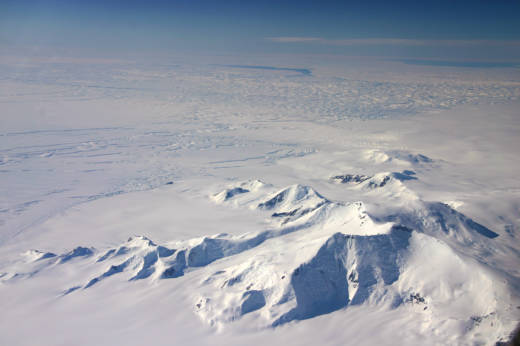Antarctica’s ice has been melting, most likely because of a warming climate. Now, newly published research shows the rate of melting appears to be accelerating.
Antarctica is bigger than the U.S. and Mexico combined, and it’s covered in deep ice — more than a mile deep in some places. Most of the ice sits on bedrock, but it slowly flows off the continent’s edges. Along the western edge, giant glaciers creep down toward the sea. Where they meet the ocean, they form ice shelves.
The shelves are the specialty of Ala Khazendar, a geophysicist and polar expert at NASA’s Jet Propulsion Laboratory in Pasadena.
“You have this floating plate of ice being fed by the glaciers flowing from the interior of the continent,” he says, “while having ocean water underneath it.” He calls the shelves “the gates of Antarctica.”
Although the shelves float, they’re still connected to the mainland. The point at which the ice shelf is no longer supported by bedrock is called the “grounding line.”

